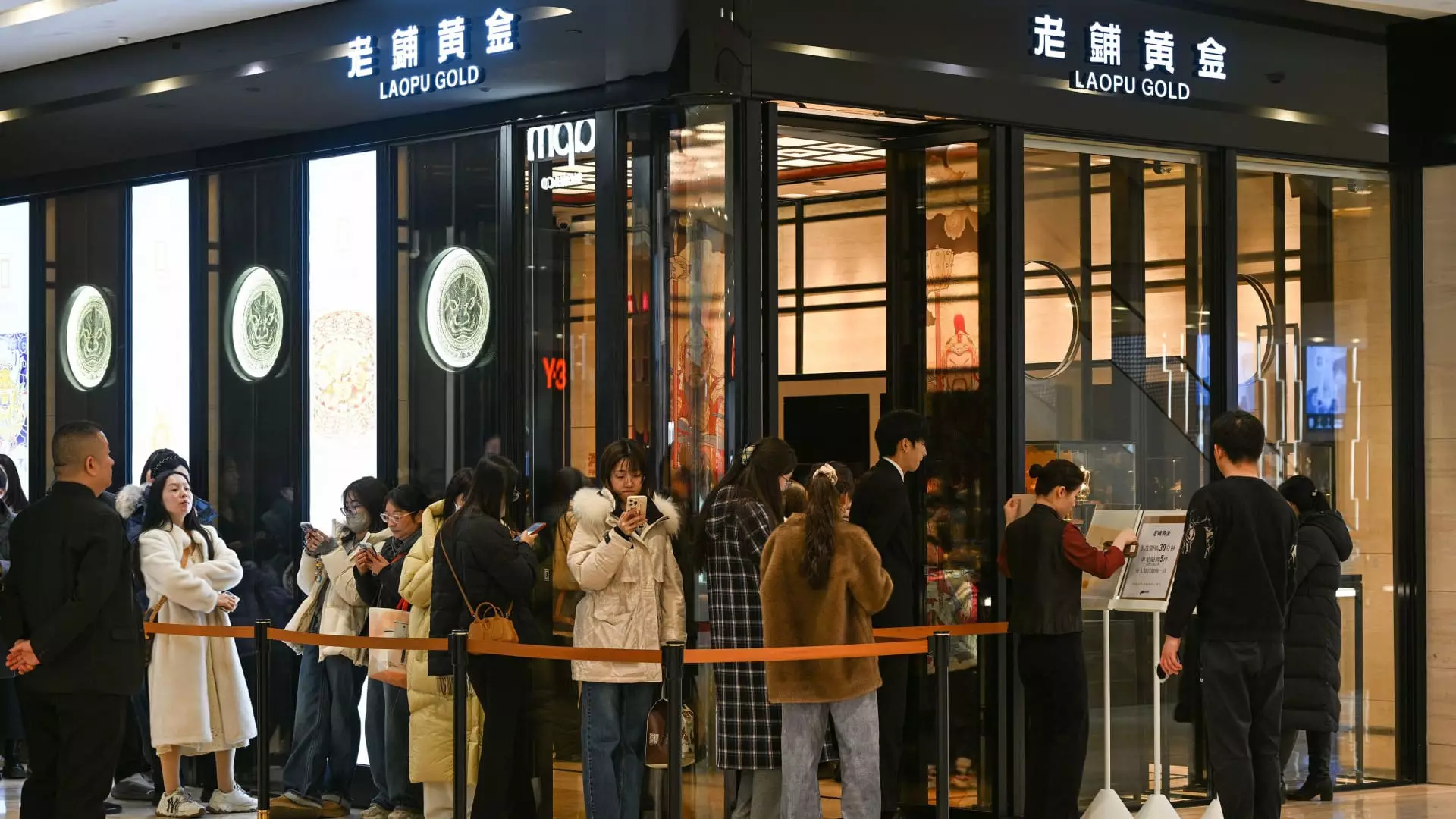As China continues to emerge from the shadows of the pandemic, the revival of consumer spending remains both a hopeful narrative and a concerning reality. While recent earnings reports from tech giants like Alibaba and JD.com reveal a slight uptick in revenue, the figures are far from what is needed to declare a robust recovery. Charlie Chen from China Renaissance Securities aptly noted that despite signs of rejuvenation, the growth isn’t yet meeting the pre-pandemic standards. This state of affairs begs the question: Is the so-called recovery merely ephemeral, or is it a sign of deeper systemic issues in consumer behavior and confidence?
Despite the promising growth in e-commerce revenues, one cannot ignore the psychological toll the pandemic and associated economic policies have exacted on the average consumer. As many households contend with the consequences of a real estate slump, consumer confidence appears shaky at best. The Chinese government’s emphasis on consumption as a driving force for recovery has led them to introduce various subsidies and policy changes. However, the reliance on state intervention raises critical concerns about the sustainability of this growth. Will consumers rush back to spending sprees simply because of governmental nudges, or is a more profound change in their mindset required?
Spotty Growth Amidst Broad Challenges
Intriguingly, the earnings reports reveal a landscape pockmarked with both success stories and dire realities. Companies such as Laopu Gold and Pop Mart have thrived, with extraordinary profit margins that starkly contrast the broader downturn in retail sales. This distillation of consumer behavior suggests that while certain segments may flourish, the overall marketplace is rife with uncertainties and challenges. Are we witnessing a bifurcation in consumer spending, where niche products thrive while essential goods languish?
In contrast, giants like Tencent have shown only mediocre growth in their financial technology and business services, with their figures echoing sentiments of a stagnant marketplace struggling for meaningful progress. Interestingly, Tencent’s negligible year-on-year growth of 3% starkly juxtaposes with their earlier peaks, implying not only a subdued consumer base but also an industry working hard to retain its existing customers rather than attract new ones.
Even with small victories, many sectors, including commodities like milk tea and coffee, reveal a dismal mood. Retailers are caught in a price-cutting war driven by competition, further eroding margins and diminishing consumer spending power. This juxtaposition reveals a paradox: despite the rise of affluent urban consumers, the average shopper appears constrained by both market pressures and intrinsic fears about future economic stability.
The Role of Policy in Consumer Dynamics
Government actions, particularly those aimed at stimulating spending, signal a shift in understanding the essential role consumption plays in economic vitality. However, is this sustainable? Policies such as the expansion of trade-in incentives for smartphones and electric cars aim to rejuvenate demand, but they also highlight a growing dependency on top-down governance to spur growth. Will the Chinese consumer increasingly rely on these initiatives, or will they eventually gravitate toward independent spending habits?
There’s a palpable irony in the fact that while retail sales saw a measure of improvement—growing by 4% year-over-year in early 2024—this growth is set against the backdrop of a four-year average rate of nearly double that. To frame it differently, the growth narrative masks a broader malaise; consumers are still hesitant to partake in discretionary spending, leaving businesses scrambling to foster a revived consumer spirit.
Policies meant to encourage spending are ostensibly beneficial; however, they may unintentionally create a culture of short-term fixes rather than long-lasting behavior changes. The question remains whether the psychological effects of these policies could stifle genuine consumer enthusiasm over time, leading to a reliance on government intervention rather than empowering consumers to act based on their needs and aspirations.
Looking Forward: A Mixed Outlook
In a market as expansive and competitive as China’s, navigating the convoluted feedback loops between policy, consumer sentiment, and financial performance will be intimately tied to an understanding of underlying socio-economic dynamics. The rise of niche markets, often driven by authenticity and unique cultural offerings, may present one avenue of growth in an otherwise bleak consumer landscape. Yet, for the majority of companies, the road ahead is fraught with complexity.
The nation’s slow recovery and subsequent consumer behavior underscore a deeper urgency for aligning developmental goals with consumer expectations. As companies strive to engage with the post-pandemic consumer, they must reckon with an environment marked by caution, uncertainty, and diversified spending power. Hence, the challenge lies not just in boosting revenues but in fostering an environment where consumers feel confident enough to engage with the marketplace fully.

